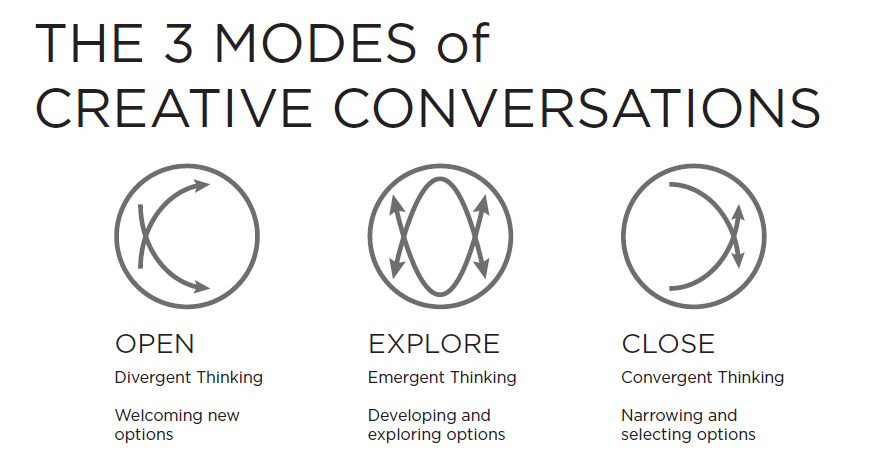My coaching conversation with Mark covers some really deep topics, and I am really grateful to Mark for his presence and willingness to be open, to go deep, and to let me share this recording of our coaching session.
We hit on three key ideas that are worth looking at in your own work!
1. Your Meetings=Your Conversations=Your Organization
The meetings you have, the conversations you can and can't have IS the organization you are in. If you can change the way you meet, the way you converse, you can change how you organize.
As Martin Buber, the 20th Century Jewish Philosopher said: 'All real living is meeting'
If your meetings don't feel like they're alive, it's up to you to bring the energy they need to come back to life. Mark's organization is so focused on delivering on their core promises in a big way that they micromanage and try to eliminate failure. Without any tolerance for failure or conjecture, without an idea of constant experimentation and learning, new ideas can be deeply frightening. Every meeting is about delivery. They are an organization of closers. That brings us to idea number two:
2. Openers, Explorers and Closers need each other
Mark identified how frustrating it is when teammates have mismatched models of creativity and different abilities and tolerances in and with the other modes. Mark identified the three modes of creative conversations as Opening, Exploring and Closing (which I try to teach to every group I come in to consult with....it's so core to productive collaborative conversations!)
Opening is the creative divergence that loves to bring new ideas to the table. Exploring is the creative emergence, which allows ideas to breathe and grow. And Closing is the creative convergence, the comfort with eliminating choices, aligning and delivering on ideas.
Mark is an Explorer. He likes to talk things out, to let things emerge from the soup of his creative process. Closers, particularly , find that mode frustrating, wasteful and confusing. Closers like to land the plane, to figure things out, to end dialogue.
Openers, Explorers and Closers need each other. And they each need to learn how to tolerate the other modes and ask for their own needs in creative conversations. Which brings us to our third key idea:
3. Invite people to a Finite Game
We all need to design invitations with the creative tendencies of other people in mind. Mark wants others to understand his creative energies and help him support and shape them. But he needs to frame the process as an invitation into a finite game. In my work, I find that people are willing to try something if they know that they can end the game anytime they want! Mark also wants others to support *his* mode of thinking, but isn't thinking about how the other people on his team might be thinking the *exact* same thing! So, the rules of his game, the game he wants to invite people into, we could call the "give me your energy, attention, benefit of the doubt and tolerance for my creative modes" game. That's a big ask, and totally unilateral. His job is to find a way to include other people in the process, and to make the rules of his game apply to everyone. That's an invitation that people can get behind. That's the art of conversation design!
As Mark says, he needs to learn how to be with others in a way that isn't" just launching into my mode without preparing people for the rules of the game" and he needs to do it in a way that feels natural, not in a way that requires him to invert his approach, to turn himself upside down and inside out in order to work with others, which is what he's doing now. And it's killing him. Treating every conversation like an experience, he has to *design* the invitation into the experience in a way that resonates with his partners.
The question we start with, can a public purpose organization be more agile, becomes "can a purpose driven person bring the energies needed for creative transformation?" And that question, I believe, requires individuals in the organization to be agile, to be comfortable picking up the creative energies required for the moment, for themselves and for those they work and play with. Organizational agility totally and completely counts on people who can be agile in their movement between the creative modes and who can frame shifts in those modes as invitations.
So...that's a lot to chew on. Thanks again to Mark for letting me record and share this and for giving me the opportunity to listen and speak with him! Enjoy...


